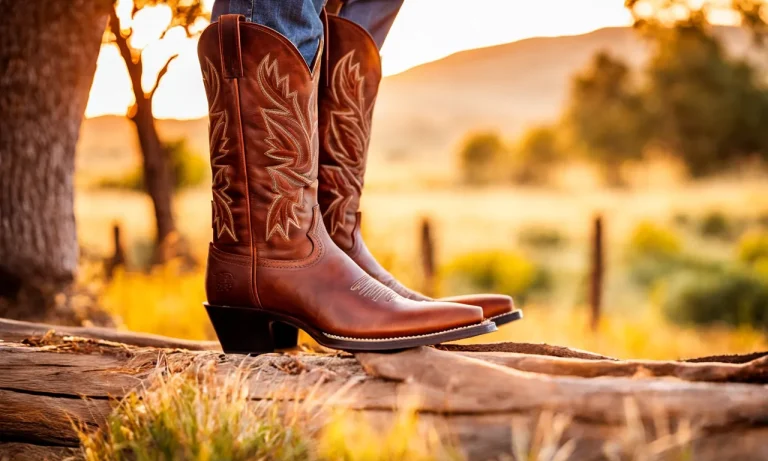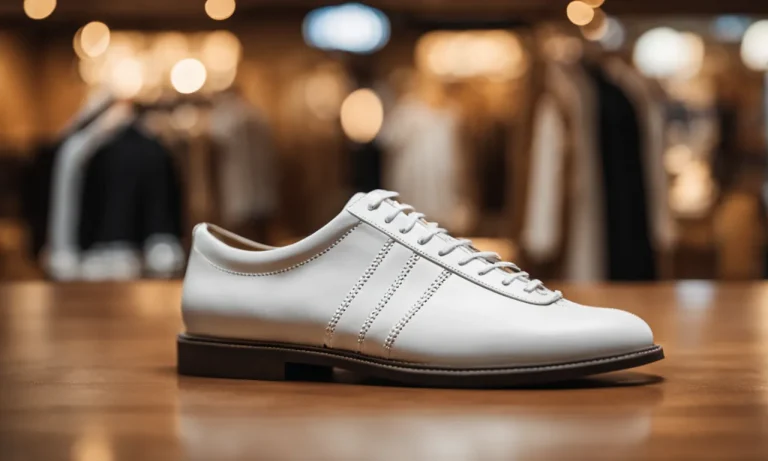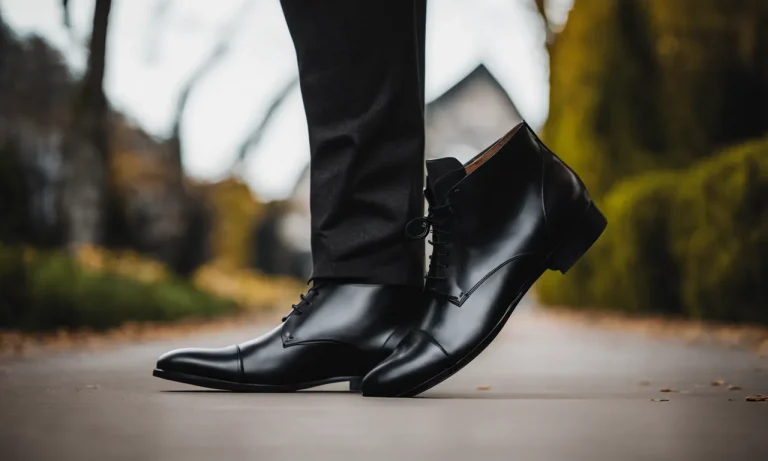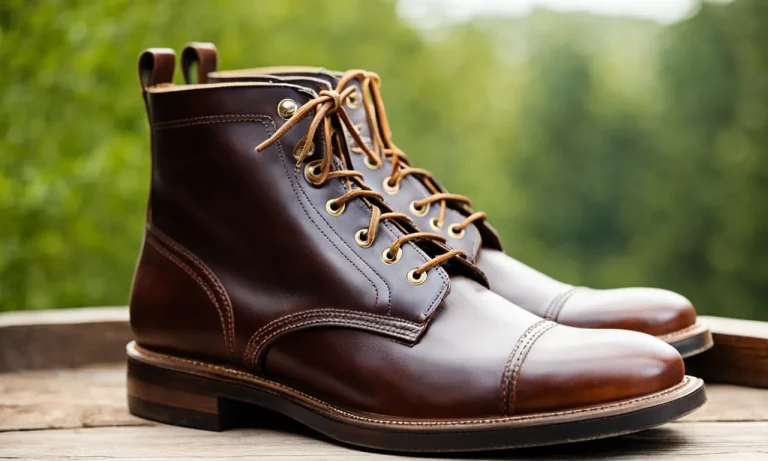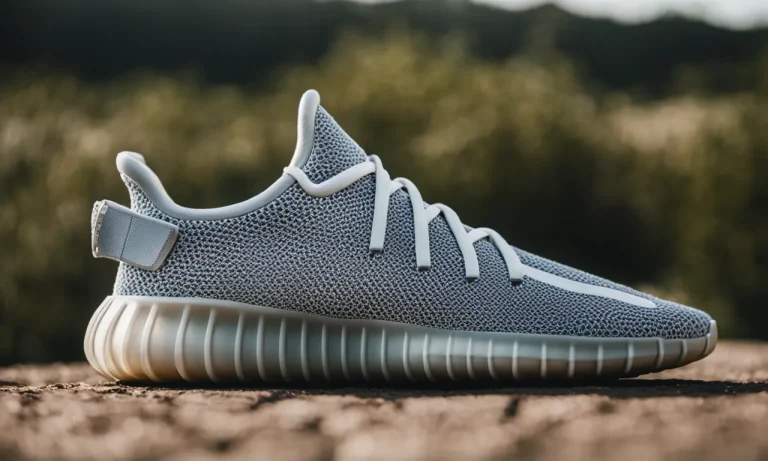For centuries, horses have been an integral part of human civilization. From being used for transportation and warfare to sports and companionship, these majestic animals have served us well. One thing that has enabled horses to fulfill these roles is horseshoeing – the practice of nailing metal shoes onto their hooves.
If you’re short on time, here’s a quick answer: Horses are shod to protect their hooves from wear and tear. Horseshoes prevent excess hoof wear, provide traction, correct gait issues, and protect the sensitive hoof wall.
In this comprehensive guide, we will examine the history of horseshoeing, reasons for shoeing horses, the shoeing process, and pros and cons of shoeing versus going barefoot.
A Brief History of Horseshoeing
Horseshoeing, the practice of attaching protective metal shoes to a horse’s hooves, has a long and fascinating history that dates back thousands of years. Throughout the centuries, humans have recognized the importance of horseshoeing in maintaining the health and performance of horses.
Let’s take a closer look at the history of horseshoeing and how it has evolved over time.
Horseshoeing in Ancient Times
The origins of horseshoeing can be traced back to ancient civilizations such as the Romans, Greeks, and Egyptians. These early civilizations recognized the need to protect horses’ hooves from wear and tear caused by the rough terrains they traveled on.
They used various materials like leather, straw, and even bronze to create protective coverings for the hooves.
As civilizations advanced, so did the techniques and materials used in horseshoeing. The Romans, in particular, played a significant role in the development of horseshoeing. They began using iron shoes, which provided better durability and protection for the hooves.
The Romans also introduced the practice of nailing the shoes to the hooves, which is still commonly used today.
Advancements in Shoe Design and Materials
Over time, the design and materials used in horseshoes continued to evolve. In the Middle Ages, horseshoes were made from wrought iron, providing even greater strength and longevity. The development of the anvil and forge allowed for more precise shaping and fitting of horseshoes, leading to improved performance and comfort for the horses.
In the 19th century, advancements in metallurgy led to the production of steel horseshoes, which offered enhanced durability and reduced weight. This allowed horses to move more efficiently and comfortably.
Today, horseshoes are typically made from steel or aluminum alloy, offering a balance between strength and weight.
Additionally, the understanding of equine anatomy and biomechanics has greatly influenced the design of horseshoes. Different shoe styles, such as bar shoes or egg bar shoes, are now used to address specific hoof issues and provide additional support to the horse.
Throughout history, horseshoeing has played a crucial role in maintaining the health and performance of horses. The practice has evolved from simple protective coverings to sophisticated shoe designs tailored to meet the specific needs of individual horses.
Horseshoeing continues to be an essential aspect of equine care and is performed by skilled farriers who utilize their knowledge and expertise to ensure the well-being of our four-legged companions.
Why Do Horses Need Shoes?
Many people wonder why horses need shoes, as they are naturally equipped with hooves that seem strong and durable. However, there are several reasons why horses may require shoes to maintain their hoof health and overall soundness.
Prevent Excess Hoof Wear
One of the main reasons why horses need shoes is to prevent excess hoof wear. Horses, especially those used for riding and other activities, can experience significant wear and tear on their hooves. This is particularly true for horses that regularly traverse harsh or rocky terrains.
Shoes act as a protective barrier, reducing the direct impact on the hooves and minimizing the risk of excessive wear.
Provide Traction
Horses also need shoes to provide them with adequate traction. This is especially important for horses that participate in activities such as racing, jumping, or trail riding. Shoes with specialized treads or studs can help horses maintain stability and grip on various surfaces, preventing slips and falls.
This enhances both the horse’s safety and the rider’s confidence.
Correct Gaits and Strides
Shoeing a horse can also help correct any imbalances or irregularities in their gaits and strides. Just like humans, horses can have issues with their feet, such as uneven or unevenly worn hooves. Shoes can be customized to address these problems and provide support in areas where the horse may need it most.
By correcting these issues, shoes can improve the horse’s overall movement and reduce the risk of long-term injuries.
Protect Hoof Wall
The hoof wall is a crucial part of a horse’s hoof structure, providing strength and support. However, it is susceptible to damage from various factors, including excessive moisture, dry conditions, and abrasive surfaces.
Shoes can help protect the hoof wall from these elements, preventing cracks, chips, and other forms of damage. By keeping the hoof wall intact, shoes contribute to the overall health and longevity of the horse’s hooves.
It is important to note that not all horses require shoes, as some have naturally strong hooves that can withstand various activities. Consulting with a professional farrier or veterinarian is recommended to determine if shoeing is necessary for your horse’s individual needs.
The Shoeing Process
Shoeing a horse is an important part of equine care that involves attaching a metal shoe to the horse’s hoof. This process is carried out by a professional called a farrier, who has extensive knowledge and experience in hoof care.
The shoeing process serves several purposes, including providing support and protection to the horse’s hooves, enhancing traction, and correcting any imbalances or abnormalities in the foot.
Preparation and Assessment
Before the shoeing process begins, the farrier will first assess the horse’s hooves to determine the appropriate shoe size and shape. This assessment involves examining the foot’s overall health, checking for any signs of lameness or injury, and evaluating the horse’s gait.
The farrier will also consider the horse’s workload, terrain, and any specific needs or requirements.
Once the assessment is complete, the farrier will then prepare the hoof for shoeing. This involves cleaning the foot thoroughly, removing any excess dirt or debris, and trimming the hoof to the appropriate length.
Trimming is essential to maintain the hoof’s balance and prevent issues such as uneven wear or strain on the joints.
Trimming and Balancing the Hoof
Trimming and balancing the hoof is a crucial step in the shoeing process. The farrier will carefully trim the hoof walls, taking into account the horse’s conformation and the desired shape of the foot. This helps to maintain proper alignment and prevent excessive strain on the joints and tendons.
In some cases, the farrier may need to make additional adjustments to correct any imbalances or abnormalities in the foot. This may involve using specialized tools to remove excess sole or frog material, or applying corrective shoeing techniques such as wedges or pads.
These adjustments are aimed at improving the horse’s comfort, gait, and overall performance.
Fitting and Nailing the Shoe
Once the hoof is properly trimmed and balanced, the farrier will then fit the shoe to the hoof. The shoe is carefully shaped to match the contours of the foot and provide maximum support and protection. It is then heated and shaped using a forge or anvil, ensuring a proper fit.
Next, the shoe is nailed to the hoof using specialized nails designed specifically for this purpose. The farrier carefully drives the nails into the hoof wall, ensuring they are secure and do not cause any discomfort to the horse.
The excess nail protruding from the hoof is then cut and filed down to prevent any injuries.
It is important to note that the shoeing process should be carried out by a professional farrier who has the necessary knowledge and skills. Attempting to shoe a horse without proper training can lead to serious injury or discomfort for the horse.
Regular maintenance and monitoring of the shoeing are also essential to ensure the horse’s continued comfort and soundness.
For more information on horse shoeing and hoof care, you can visit https://www.americanfarriers.com/ or https://www.farriersjournal.com/.
Barefoot vs Shod: Pros and Cons
Benefits of Going Barefoot
Many horse owners are choosing to keep their horses barefoot, which means not using horseshoes. This approach has gained popularity due to its numerous benefits:
- Natural Stride: By going barefoot, horses are able to develop a more natural and healthier stride. Without the interference of horseshoes, their hooves can flex and expand, allowing for better shock absorption and blood circulation.
- Improved Hoof Health: Horses that go barefoot have stronger and healthier hooves. The constant contact with the ground helps to naturally wear down the hooves and prevent the development of common hoof problems such as cracks and thrush.
- Increased Traction: Barefoot horses have better traction on various terrains, including muddy or slippery surfaces. This can be particularly beneficial for trail riding or equestrian sports that require agility and stability.
- Cost Savings: Going barefoot eliminates the need for regular farrier visits and horseshoe replacement, which can save horse owners a significant amount of money in the long run.
Advantages of Shoeing
While going barefoot has its advantages, there are also situations where shoeing a horse is necessary and beneficial:
- Protection and Support: Horseshoes provide protection and support to the hooves, especially for horses that engage in demanding activities such as jumping or racing. Shoes can help prevent injuries and provide additional support to horses with weak or compromised hooves.
- Improved Performance: For certain disciplines, such as dressage or show jumping, horseshoes can enhance a horse’s performance. The added traction and stability can help with precise movements and prevent slipping or sliding during intense maneuvers.
- Correction of Hoof Issues: In some cases, horses may have hoof conformation issues or imbalances that require corrective shoeing. A skilled farrier can apply specialized shoes to address these issues and promote proper hoof growth and alignment.
- Extended Lifespan of Hoof Wear: Horses that are frequently ridden on hard or abrasive surfaces may experience excessive hoof wear. By using horseshoes, the wear is distributed more evenly, extending the lifespan of the hooves and reducing the need for frequent trims.
Ultimately, the decision to go barefoot or shoe a horse depends on various factors, including the horse’s breed, workload, and hoof health. Consulting with a knowledgeable farrier or equine veterinarian can help determine the best approach for each individual horse.
Signs Your Horse May Need Shoes
Proper hoof care is crucial for the overall health and performance of a horse. While not all horses require shoes, there are certain signs that indicate your horse may benefit from them. Here are some key indicators to look out for:
Chipping and Cracking
One common sign that your horse may need shoes is when you notice frequent chipping and cracking of the hooves. This can occur due to various factors such as walking on rocky terrain or excessive moisture. Without proper protection, the hooves can become weak and susceptible to damage.
Shoes can provide the necessary support and prevent further deterioration of the hooves.
Excessive Wear
If you notice that your horse’s hooves wear down quickly and unevenly, it may be a sign that shoes are necessary. Horses that are regularly ridden on hard surfaces or engage in strenuous activities like jumping or racing are more prone to excessive wear.
Shoes can help distribute the weight evenly and protect the hooves from excessive abrasion, ensuring a more balanced and comfortable gait for your horse.
Soreness and Bruising
Soreness and bruising in the hooves can be an indication that your horse is experiencing discomfort. This can be caused by various factors such as walking on uneven surfaces or prolonged exposure to hard ground.
Shoes can provide additional cushioning and support to alleviate the pressure on the hooves, reducing the likelihood of soreness and bruising.
It is important to note that the decision to shoe a horse should be made in consultation with a professional farrier or veterinarian. They will be able to assess your horse’s individual needs and determine whether shoes are necessary.
Regular hoof maintenance, including trimming and cleaning, is also essential to keep your horse’s hooves in optimal condition.
For more information on horse hoof care, you can visit www.americanfarriers.com which provides comprehensive resources and insights from industry experts. Remember, keeping your horse’s hooves healthy and well-maintained is vital for their overall well-being and performance.
Conclusion
Horseshoeing has come a long way since its origins centuries ago. While some horses do well when barefoot, shoeing provides protection and enhances performance for most working equines. Knowing when to shoe your horse and ensuring proper trimming and fitting is key to keeping your equine partner healthy and comfortable.
The rich history of farriery and advancements in shoe materials demonstrate how this practice has evolved to meet the changing demands we place on horses. Whether your horse needs shoes for traction, to correct their gait, or simply to shield tender hooves, horseshoeing allows us to safely ride and drive horses for work and sport.


